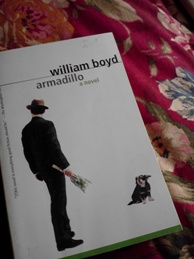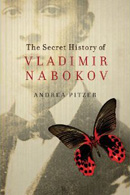The mysteries of Zembla
So much fiction relies on what’s missing from a story, the details an author fails to or chooses not to include. In the spirit of just such incomplete information, Vladimir Nabokov’s 1962 novel Pale Fire delivers that most unreliable of narrators, the mad Charles Kinbote, who obsesses over ping-pong, young boys, and his beloved country of Zembla.
As Kinbote tries to convince his poet-neighbor John Shade to write an epic about this idyllic land overthrown by revolution, the reader is left to wonder what is up with Zembla. Is it just a metaphor for Nabokov’s pre-Revolutionary Russia? Is Zembla meant to be real inside the book, or is it only a figment of Kinbote’s delusional mind?
 In “A Bolt from the Blue,” her early review of Pale Fire, Mary McCarthy noted the existence of a real-world Zemblan corollary in the Soviet Union: the twin Arctic islands of Nova Zembla. Perched above the continent on the border between Europe and Asia, the islands had come to represent, in both poetry and legend, the extreme, uncharted north.
In “A Bolt from the Blue,” her early review of Pale Fire, Mary McCarthy noted the existence of a real-world Zemblan corollary in the Soviet Union: the twin Arctic islands of Nova Zembla. Perched above the continent on the border between Europe and Asia, the islands had come to represent, in both poetry and legend, the extreme, uncharted north.
Key parts of The Secret History of Vladimir Nabokov are devoted to exploring the connections between the two, which are many. But the links between a half-mythical Zembla and Nova Zembla have been considered before, in other contexts.
William Boyd, the man charged with generating the next installment in the James Bond saga, wrote a 1998 novel called Armadillo, which winks toward both Zembla and Nova Zembla. His tale of the strange events that befall insurance adjuster Lorimer Black add the word zemblanity to our literary lexicon.
389. Serendipity. From Serendip, a former name of Ceylon, now Sri Lanka. A word coined by Horace Walpole, who had invented it based on a folktale whose heroes were always making discoveries of things they were not in quest of. Ergo: serendipity, the faculty of making happy and unexpected discoveries by accident.
So what is the opposite of Serendip, a southern land of spice and warmth, lush greenery and hummingbirds, sea-washed, sunbasted? Think of another world in the far north, barren, icebound, cold, a world of flint and stone. Call it Zembla. Ergo: zemblanity, the opposite of serendipity, the faculty of making unhappy, unlucky, and expected discoveries by design.
Two years later in an “On Language” column for The New York Times, William Safire considered (then) recent U.S.-Russian nuclear proliferation talks, mentioning that “arms controllers know that the Russians have been setting off non-nuclear explosions at its nuclear test facility on the barren, frigid Arctic island of Nova Zembla.”
Safire discusses Boyd’s definition of zemblanity, and closes his column with this note:
Writers from Jonathan Swift and Alexander Pope to Jules Verne and Salman Rushdie have used Zembla’s wastes north of Siberia as symbolic of what Charlotte Brontë called “forlorn regions of dreary space.” Now the site of testing of non-nuclear explosives at a nuclear facility has given birth to zemblanity, the inexorable discovery of what we don’t want to know.
His reference to Alexander Pope comes from Epistle II of the philosophical poem “An Essay on Man.” In the section mentioning Zembla, Pope addresses the idea of “extreme vice” and compares looking for it to asking where North is. It turns out that both are always relative to where you and the person giving the answer are, and often located a considerable distance away from whomever you ask.
Before the poles were conquered by explorers, the terms Zembla and Nova Zembla stood as emblems of romantic but hostile Arctic landscapes. But over time, they faded into abstraction, until both Zembla and Nova Zembla became vague referents that ended up in strange places. (A list from an 1894 consignment of racing horses [PDF] begins, somewhat anti-alphabetically, with the very fast Zembla, which sold for $5,000.)
Yet all along, the real place still existed and had its own history waiting to make its way into the meaning of Zembla. On the sixth day of what was the strangest research I did for the book, after taking trains from Hamburg to Berlin to Prague, I ended up on a four-hour car ride accompanied by a translator and her ex-husband. Heading to the town of Šumperk in the eastern end of the Czech Republic, we listened to a man tell the story of his time on Nova Zembla.
He talked about what had happened to him during World War II. As is sometimes the case, his NKVD (secret police) file and his account of his wartime years did not always align. Nova Zembla was once again not so far from Zembla.
Which one (if either) was accurate? There are myths in the truth, and truths in the myths. Even history likes to play Nabokov, half-hiding what can’t be apprehended straight on, leading us back to all the things we don’t (or don’t want to) remember.
The search for Zembla is an important part of The Secret History, so I won’t retell that story here. But I will say that perhaps Pale Fire’s Charles Kinbote, monster though he is, deserves the pity he receives from his doomed friend John Shade. The true story of Zembla in all its zemblanity is enough to drive anyone mad.
